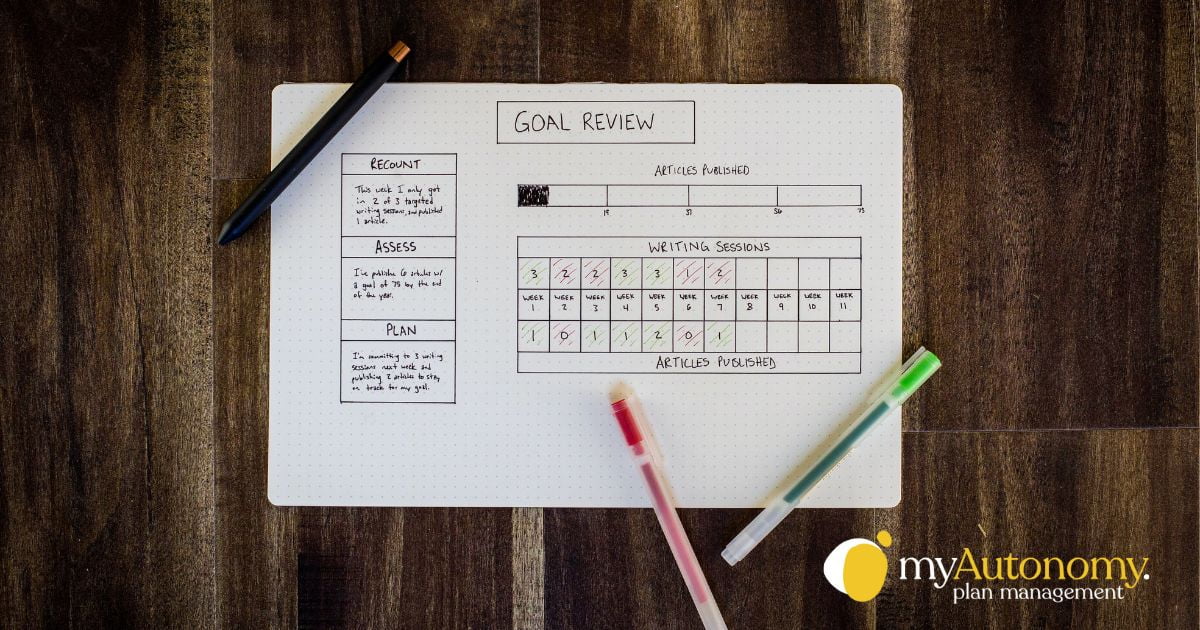Your guide to setting better NDIS goals
Goals are the cornerstone of NDIS plans. Setting the right goals can be the difference between having a plan that supports you and one that doesn’t.
All supports are linked to goals that are within your NDIS plan––that’s why goal setting is the essential first step when creating your plan.
So, how do you set goals that will help you thrive? Let’s take a look at some of the best ways.
Set goals that are specific to your needs
When creating goals, it’s important to begin with the areas that are important to you. That could mean improving your balance or independence, engaging more with the community, or building essential skills like meal preparation or driving.
The areas that are of critical concern to you should be your first goals. But, ensure that the goals you write down are both realistic and achievable for you at your current stage.
Having the goal, for example, to begin meaningful employment can be great, but it might be too ambitious depending on your circumstances. Consider what’s reasonable in the near future, and what might be possible with the right supports.
Keep in mind, though, that small increments of improvement can make a huge difference over time.
Start with goals, not supports
While many participants consider what supports they’ll need first, NDIS plans start with goals first.
Remember: supports are there to help you towards your goals, not the other way around. Once your goals are set, it will then become clear which supports you’ll need and when.
If you want to engage with your local community more, for example, having transport to take you to and from those social activities, may be needed, as well as supports for engaging in those activities.
What are examples of good NDIS goals?
When goal setting it’s helpful to consider a few areas:
- Enjoyment: include things that you enjoy. That’s because if you’re personally excited to achieve the goal, you’ll more likely stay committed and have a greater chance of making the most of your NDIS plan.
One example could be learning to drive. While this goal can be challenging, it can be a lot of fun and grant access to greater freedom.
- Some large, some small: filling your plan with lots of large goals can lead to overwhelm. Including a range of small and larger goals can ensure you achieve goals gradually throughout your plan. That way you’ll have the satisfaction of gradually working through different-sized goals and you’ll see real progress at every stage.
One example could be improving balance and movement with the help of a physiotherapist. This would typically be a longer-term goal that may take much of your plan to achieve.
A smaller goal could be to learn how to take the bus to the local shopping centre to buy groceries. This might only take a month or two to achieve.
Have questions about goal setting?
Typically, your Support Coordinator is your best person to assist with goal setting. They’re also there to help you access supports that will help you achieve your goals. LACs can help you with this too.
We’re also here to help.
Have a question or query? Get in touch on 1300 60 33 89 or at [email protected]





